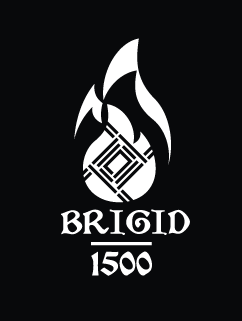
Brought to you by Kildare County Council and Maynooth University in conjunction with St. Brigid's Cathedral and Kildare Heritage Centre.
Dates: September 13th and 14th 2024. The life and times of St. Brigid and her Church of Kildare from the 5th to the 9th centuries. In person only. The Brigid's Worlds Programme can be viewed below.
Please note booking is required. For full information , schedule, maps and booking details, please click 'Book Here'.
Please email enquiries to [email protected].
Please be advised that times and programme are subject to change, check back for up to date information.
Dr Edel Bhreathnach
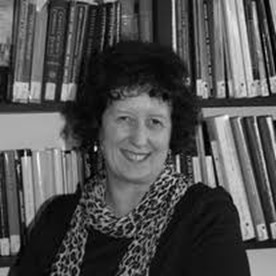
Dr Bhreathnach was formerly Chief Executive Officer of the Discovery Programme, and has published extensively on a wide range of topics relating to medieval Irish history and culture. Her brand new book, Monasticism in Ireland, AD 900-1250 is out now with Four Courts Press.
Paper title: From one religion to another: the significance of conversion in Brigit's life and the foundation of Kildare
Abstract: This paper attempts to place Brigit and the foundation of her church in the context of the change in religion that occurred primarily in fifth and sixth-century Ireland, with an emphasis on conversion in greater Leinster. Brigit and Kildare epitomize the blending of two religions and traditions in a context that has not been fully explored, namely, that of competing Christian missions, the rise and fall of dynasties due to conversion, and the important role played by client peoples in maintaining ceremonial landscapes and reshaping them as Christian landscapes.
Dr Dorothy Ann Bray

Dorothy Ann Bray is a retired Associate Professor in the Department of English, McGill University, Montreal, Canada, where she taught medieval literature. She earned her PhD in Celtic Studies from the University of Edinburgh, where she began her research on the composition and interpretation of early Irish hagiography (from the 7th to the 11th centuries). She has published several articles on the folklore and literary composition of the early Irish saints’ Lives, in particular the Lives of women saints, especially St. Brigid of Kildare.
Paper Title: The Feastday of St. Brigit and the Festival of Imbolg
Abstract: The first indication that St. Brigit’s feastday falls on the first of February occurs in the 7th-C. Life by Cogitosus of Kildare; at the conclusion, he confirms that the community celebrates the day in honour of their founder and patron saint at the same time as other festivities. As is well known, the first day of February is also designated as Imbolc, one of the four ‘quarter days’ in the Irish calendar, a day that is supposed to herald the beginning of spring. This coincidence of dates was made part of the theory – and eventually accepted as proof – that St. Brigit was no more than the goddess Brigit, euhemerized by the Christian church and co-opted into its calendar of saints. However, this coincidence of days implies that Imbolc was also a ‘fixed’ date. This paper examines some of the ideas put forward regarding Imbolc and its meaning, its connection (if any) to the goddess Brigid as a goddess of spring, and its connection (if any) to St. Brigit’s feastday in the Christian calendar of seventh-century Ireland.
Prof. Thomas Owen Clancy

Professor Thomas Owen Clancy holds the Chair of Celtic at the University of Glasgow, where he has taught since 1995, having previously been educated in New York University and the University of Edinburgh. He has published extensively across the fields of Celtic Studies, early insular history, and onomastics, with a special interest in the early history and literature of Scotland. This has been particularly focused on the cult of saints, and on the island of Iona, about which he has co-written a book (with Gilbert Márkus, Iona: The Earliest Poetry of a Celtic Monastery (1995)), and is currently leading the research project 'Iona's Namescape: Place-names and their dynamics in Iona and its environs'.
Paper Title: St Brigit and her cult in early medieval Scotland
Abstract: St Brigit is, with the exception of the Virgin Mary, the saint commemorated most in place-names in Scotland. Her cult there was clearly very widespread in the middle ages. This paper looks at the earliest record of her cult there, the 9th-century foundation legend of the monastery of Abernethy in eastern Scotland. This legend places the foundation in the period of Brigid's successor, Darlugdach. The foundation legend and its Abernethy context will be examined, as well as how they relate to the wider medieval cult of the saint in both Scotland and Ireland.
Dr Elizabeth Dawson

Elizabeth Dawson is an expert on early medieval Ireland and lecturer in medieval history at Carlow College, St. Patrick's. Her research focuses on medieval sainthood, with a particular interest in the cults of the leading Irish patron saints. Her monograph, Lives & Afterlives: the Hiberno-Latin Patrician Tradition, 650-1100 was very recently published with Brepols in 2023.
Paper Title: The Changing Fortunes of St Brigit: Navigating Uí Néill Territory, Leinster & Kildare.
Abstract: Brigit is a saint whose expansive and multifaceted biography led to a powerful early medieval cult in Ireland and beyond. Her earliest extant Lives, that by Cogitosus and the anonymous author of Vita Prima Sanctae Brigitae, express the multiplicity of Brigidine veneration in the early medieval period. This paper will consider the territorial footprint expressed in each Life as an important avenue through which the diversity of the cult can be appreciated.’
Dr Sharon Greene

Dr Sharon Greene is an archaeologist based in South Kildare. She works for Abarta Heritage, is an Adjunct Research Fellow at UCD School of Archaeology and is a member of the Institute of Archaeologist of Ireland and of the Historic Monuments Advisory Committee for Kildare County Council. She was editor of Archaeology Ireland magazine from 2018 to 2023. She has been active in local heritage through Castledermot Local History Group for over ten years. Her research interests include the archaeology and history of early medieval Ireland.
Paper Title: Traces of Brigid’s material world
Abstract: Accounts of St Brigid in the Lives written in the 7th and later centuries portray not only a remarkable, holy woman but one who seems grounded in the real world, taking part in household chores and interacting with people of all grades and with animals. But to what degree do these writings reflect the late 5th to early 6th centuries of Brigid’s world or that of Cogitosus and the other writers a century or more later? This paper explores what light archaeological evidence can shed on people, the economy and life in Brigid’s period.
Dr Fabio Mantegazza
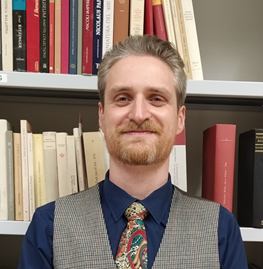
I am a research fellow at the University of Molise; previously, I held the same position at the universities of Bologna and Udine. I obtained my PhD at the International Society for the Study of Medieval Latin Culture; for my PhD thesis I worked on the critical edition, with commentary and Italian translation, of Cogitosus’s Vita sanctae Brigidae, which is currently in the last stage of the publication process. At the University of Molise, I am working with Giovanni Paolo Maggioni on the preliminary study for the critical edition of Godfrey of Viterbo’s Pantheon. My interests in the Latin Middle Ages mainly concerns textual criticism and hagiography, especially regarding the Hiberno-Latin literary production, and “Celtic” studies from a historical, linguistic, and religious point of view.
Paper title: The textual transmission of Cogitosus’s Vita sanctae Brigidae through the names of Brigid’s parents
Abstract: Cogitosus’ Vita sanctae Brigidae is the most widely copied work of Hiberno-Latin hagiography, and one of the most successful female hagiographies of the early Middle Ages. At least eighty-one manuscript witnesses, together with many instances of rewriting, have come down to us. Through philological analysis, it is possible to reconstruct a bipartite stemma codicum where the selectio of variant readings can rest on more solid philological foundations alongside the usus scribendi, and historical and linguistic considerations. Studying scribal errors, especially on the higher levels of the stemma, allows us to gain some insight into the figure of Brigid and her cult on the Continent from at least the 9th century. Establishing the readings of the archetype, on the other hand, is of enormous importance for the reconstruction of the text, the method of composition, and the cultural and hagiographic background of Cogitosus. My paper aims to illustrate the main complexities of the recensio of the vita, focusing on the names of Brigid’s parents, in order to assess the image of Brigid that Cogitosus and his sources had, and its conservation and transformation in the monastic communities – Irish or otherwise – on the Continent.
Conor McDonough, OP
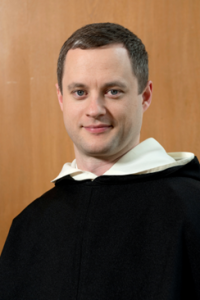
Conor McDonough OP is a friar of the Irish Province of Dominicans and a PhD student in Classics at the University of Galway, where he is working on the reception of the letters of St Paul in early Irish Christianity. He also hosts the 'Treasure Ireland' series on YouTube, which aims to tell stories at sites of Christian significance in every county in Ireland.
Paper Title: "Mary of the Gael": What does it mean?
Abstract: What did successive generations of Irish Christians mean when they called St Brigid, "Mary of the Gael"? We can only answer this question if we understand how early Irish Christians understood Mary herself. In this paper, I will draw on a variety of sources - poetic, liturgical, hagiographical - to sketch an early medieval Irish theology of Mary. I will show that this theology is rich in connections with the monastic life, and especially the female monastic life, exemplified in figures like Ite, Moninne, and above all, Brigid.
Prof. Catherine McKenna

Catherine McKenna the Margaret Brooks Robinson Professor of Celtic Languages and Literatures, has taught at Harvard since 2005. She is a scholar of medieval Welsh verse and prose literature, as well as medieval sacred biography, in particular the hagiographic tradition surrounding Saint Brigit. She is the author of numerous articles as well as a monograph on medieval religious poetry, The Medieval Welsh Religious Lyric: Poems of the Gogynfeirdd 1137-1282 (Ford and Bailie, 1991). Currently, she is completing a book-length study on the longue durée of the cult of St. Brigit.
Public Talk title: ‘Brigid: the knowns and the unknowns’
Abstract: Brigid is multi-faceted—a figure of history, of folklore, of devotion, of fiction and of myth. The Brigid’s World conference focuses on the Brigid of history, and so this talk will explore what, if anything, we know about the Brigid of history and why we don’t know more. We’ll look at the figure of Brigid as she was imagined by the authors who first wrote about her to see which of the traits and stories that we associate with her were there from the start. And we will also look at some of the best known stories associated with Brigid, and when and how they became part of her legend.
Prof. Jean-Michel Picard
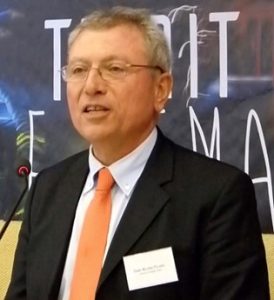
Jean-Michel Picard is Professor Emeritus in the UCD School of Languages, Cultures & Linguistics and a member of the Royal Irish Academy. He is both a linguist and a historian and has published extensively on Hiberno-Latin language and style, on early Irish hagiography, and on the links between Ireland and the Continent in the Middle Ages. His special interest is primary sources, and he mostly works on hagiographical manuscripts of Irish interest.
Paper Title: The cult of Saint Brigid in continental Europe and the manuscripts of Cogitosus's Vita Brigitae
No early Irish manuscript of the seventh-century Life of Brigid by Cogitosus has survived. The earliest manuscripts of this Life were all written on the continent. From the study of one passage (chapter 19), this paper intends to show that the ninth and tenth-century compilers had difficulties with Cogitosus’s Hiberno-Latin syntax and with place-names (so did modern editors …). It will also show that the earliest manuscripts of the Life come from the same region, where there was a well attested Irish presence between the seventh and the eleventh century and where the cult of Brigid is still very much alive.
Prof. Pádraig Ó Riain

Pádraig Ó Riain is Professor Emeritus of Early and Medieval Irish at University College Cork, and the previous holder of Visiting Professorships at Bochum and Freiburg in Germany and at Aberystwyth in Wales. He is a former holder of the Parnell Fellowship at Magdalen College, Cambridge, and was the first Irish scholar to be awarded the Humboldt Prize. A former President of the Irish Texts Society and a former Member of Council of the Royal Irish Academy, Professor Ó Riain is the author of numerous publications on Irish hagiography, place-names, personal names, and textual transmission. He is the author of the best-selling Dictionary of Irish Saints (2011).
Paper Title: From the Continent to Ireland: the early written record of Brigid’s feastday
Abstract: This paper will discuss the earliest records of the feast, together with the influences at work on their wording.
Dr Katja Ritari

Katja Ritari holds and MA in history from University of Helsinki and received her PhD in Celtic Studies from UCC in 2004. After that she worked as researcher at the Study of Religions in Helsinki in various projects gaining the title of a Docent (Adjunct professor) in Study of Religions in 2011. She is the author of 2 monographs by Brepols (“Saints and Sinners in Early Christian Ireland: Moral Theology in the Lives of Saints Brigit and Columba” & “Pilgrimage to Heaven: Eschatology and Monastic Spirituality in Early Medieval Ireland”) and various articles. Her latest book is “Being Pagan, Being Christian in Late Antiquity and Early Middle Ages” by Helsinki University Press edited together with Jan Stenger and William Van Andringa.
Title: Female sanctity in the Lives of Saint Brigit
Abstract: In the popular images of Brigit the goddess her femininity takes a central place, but wat is the role of gender in the medieval presentations of her as a saint? The perceptions of Brigit’s sanctity in her Lives were shaped, negotiated and bounded by the cultural expectations concerning women’s roles and sanctity in general, as well as by the author’s understanding of the holiness of his subject. The paper will focus on the hagiographers’ gendered expectations which guide the ways in which Brigit’s sanctity is framed and performed in the narratives.
Tiago Veloso Silva

Graduated from Universidade de Brasília, Brasil, Tiago Silva is a PhD student at the University of Maynooth and is part of the SFI-IRC project “Power and Patronage in Medieval Ireland: Clonard from the Sixth to Twelfth Centuries” led by Dr Niamh Wycherley. His thesis is centred on studying female performances of power and authority in medieval Ireland, with a greater focus on the 12th century, and seeks to develop a framework of medieval Irish patronage that acknowledges women’s agency and power in the performance of rulership.
Paper Title: Women’s ecclesiastical patronage: the case of Kildare
Abstract: Among the various ecclesiastical sites that flourished in early medieval Ireland, Kildare was one of the most prominent. This status was propelled by the cult of its patron saint, Brigit, but also by its strong political connections to some leading families of Leinster. According to one of Brigit’s hagiographers, Cogitosus, Kildare was not only a leading church but also a royal centre that housed the treasures of kings, which further attests to the relationship between the nobility and Kildare. Although much has been said about the networks of kings and Kildare, mainly bishops and abbots, relatively little research has been conducted investigating the connection between noblewomen and Kildare, despite housing the most famous nunnery of medieval Ireland and arguably the most powerful religious women up to the 12th century. This paper discusses the case of Sarnat, queen of Leinster in the early 7th century, and her familial connections to Kildare and the Fothairt to paint a picture of female power and patronage in the province of Leinster and insert them into a wider framework of power and authority.
Dr Clare Stancliffe
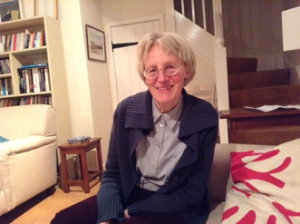
Dr Clare Stancliffe is an early medieval historian and Honorary Fellow in the Dept of Theology and Religion, Durham University, UK She has been interested in early Irish Christianity since her time as an undergraduate, when her tutor at Oxford set her an essay question, ‘Did eastern monasticism prove an exportable commodity?’, and included Kathleen Hughes’ The Church in Irish Society on the reading list. The topics of her research and publications include late antique/ early medieval saints’ Lives, Columbanus, and Irish Christianity and its links abroad. Pertinent here is a paper on ‘The Miracle Stories in seventh-century Irish Saints' Lives’ (in Le septième siecle: changements et continuites / The Seventh Century: Change and Continuity, ed. J Fontaine and J. Hillgarth,Warburg Institute, London 1992).
Title: The Early Lives of St Brigit Revisited
St Brigit was the focus of two early Latin Lives: one, by Cogitosus; the other, anonymous. The anonymous Life is considerably longer than that by Cogitosus, and it has several chapters that closely parallel chapters in Cogitosus’s Life, as well as much additional material. Both Latin Lives have just been published in a modern scholarly edition for the first time; but their editor, Philip Freeman, included no real discussion of these Lives, focusing simply on the laudable objective of getting workable editions with translations into print. My paper will look anew at the question of which is the earlier Life – an issue which currently divides scholars.
Prof. David Stifter

David Stifter is Professor of Old and Middle Irish in the Department of Early Irish at Maynooth University. His research and interests range from the comparative linguistics of the Celtic and Indo-European languages over the Ancient Celtic languages (Lepontic, Gaulish, Celtiberian) to early medieval Irish literature. His award-winning handbook Sengoídelc. Old Irish for Beginners has become the standard introduction to the Old Irish language in universities world-wide. His current research is on the Celtic and non-Celtic prehistory of Ireland and Britain and on the tradition of writing in the ogham script in Ireland and Britain.
Paper Title: The Significance of ‘Brigit’
The 5th-century founder saint of the church of Kildare bore a remarkably ancient name: OIr. Brigit (*Briɣēddī in the Primitive Irish language of the saint’s own life time), Classical ModIr. Brighid, reformed ModIr. Bríd, anglicised Brigid, continues a word that today looks back at a history of at least six thousand years, and that in other traditions occurs as the name or epithet of goddesses. In its earliest form accessible to us, the name can be reconstructed as Proto-Indo-European *bʰr̥g̑ʰn̥tih₂- ‘the elevated/exalted one (fem.)’. This is continued also in Vedic, Avestan, Old Frankish, and in Gaulish and British Celtic. This talk will outline the grammatical significance of the name from a comparative-historical linguistic perspective, and it will look at the implications of the name for the practice of name-giving in early medieval Ireland.
Dr Catherine Swift

Dr Swift is Lecturer in Medieval and Irish Studies, Mary Immaculate College, University of Limerick. She graduated UCD in History and Archaeology has a Masters in Archaeology from the University of Durham, a D.Phil from the University of Oxford on history of the early Irish church and a MPhil in Early Irish Language and Literature from UCD. Former Research Scholar, Dublin Institute for Advanced Studies. She is Currently studying for Masters in Christian Theology, Loyola Institute, TCD. She taught in University College Dublin, University of Liverpool, Maynooth University and University of Galway before taking her current post. She has published widely on many aspects of medieval Irish history.
Paper Title: The nature of Brigit's community — as viewed through a Cappadocian lens
Abstract: In this paper I propose looking in detail at the evidence for knowledge of St Basil's rule in Ireland and on the lifestyle of a mixed religious community where the female element was equal in authority to the male as depicted in his writings. Basil's Asketikon has been edited by Anna de Silvas, as has the Latin version of his rule translated by Rufinus and his letters exist in Loeb translation - there is also the life of his sister Macrina and writings by his brother. So from the point of view of the Cappadocian model, there is considerable amount of evidence. Obviously there is far less available re what is going on in Kildare itself but at least this provides a potential model for exploration.
Dr Niamh Wycherley
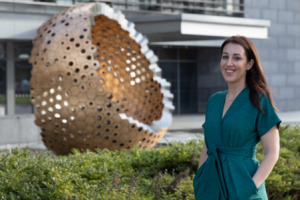
Conference organiser
Dr Niamh Wycherley works in the Department of Early Irish as a medieval historian, specialising in the early Irish Church. She hosts The Medieval Irish History Podcast. She is Co-Chair of the Royal Irish Academy's Young Academy Ireland. She won the NUI Publication Prize in History in 2017 for her first monograph, The Cult of Relics in Early Medieval Ireland. She is the Principal Investigator of the 4-year SFI-IRC Pathway project 'Power and Patronage in Medieval Ireland: Clonard from the sixth to twelfth centuries'. She previously held IRC and NUI postdoctoral fellowships in UCD Dublin and NUI Galway. She contributes regularly to RTÉ Brainstorm and television programmes such as the RTÉ 1 documentary Finding Brigid (with Siobhán McSweeney).
Paper title: ‘Conference conclusions and discussion — St Brigid of Kildare’s 1500th anniversary and the construction of a medieval female national saint in the 21st century’
Head office Aras Chill Dara
Devoy Park,
Naas
Co Kildare W91 X77F
Phone: 045 980200
Powered by DataDyne
